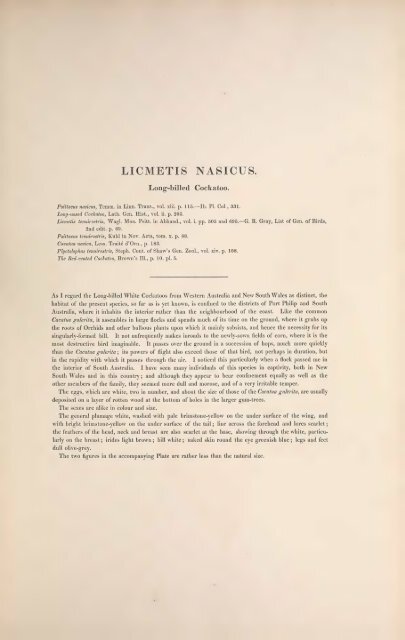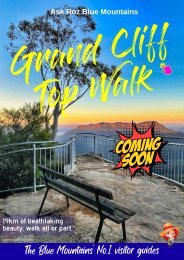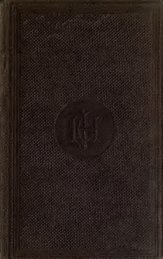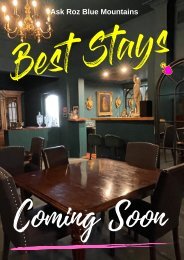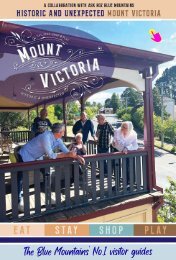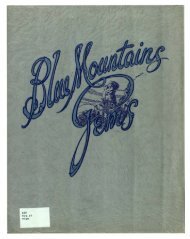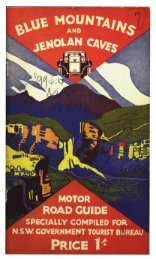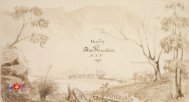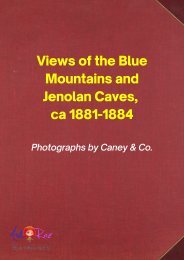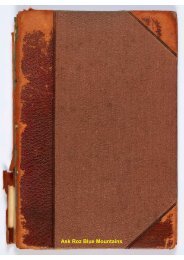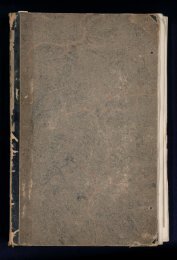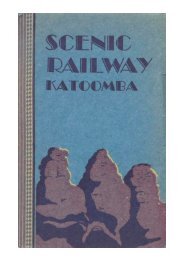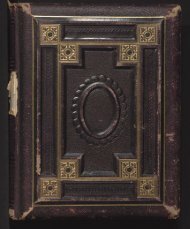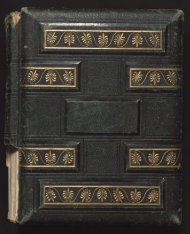John Gould Birds of Australia Volume 5
The Birds of Australia was a book written by John Gould and published in seven volumes between 1840 and 1848, with a supplement published between 1851 and 1869. It was the first comprehensive survey of the birds of Australia and included descriptions of 681 species, 328 of which were new to Western science and were first described by Gould. NOTE: This is shared in its entirety so there are many blank "protective" pages.
The Birds of Australia was a book written by John Gould and published in seven volumes between 1840 and 1848, with a supplement published between 1851 and 1869. It was the first comprehensive survey of the birds of Australia and included descriptions of 681 species, 328 of which were new to Western science and were first described by Gould.
NOTE: This is shared in its entirety so there are many blank "protective" pages.
Create successful ePaper yourself
Turn your PDF publications into a flip-book with our unique Google optimized e-Paper software.
LICMETIS NASICUS.<br />
Long-billed Cockatoo.<br />
Psittacus nasicus, Temm. in Linn. Trans., vol. xii. p. 115.—Ib. Pl. Col., 331.<br />
Long-nosed Cockatoo, Lath. Gen. Hist., vol. ii. p. 205.<br />
Licmetis tenuirostris, Wagl. Mon. Psitt. in Abhand., vol. i. pp. 505 and 695.—G. R. Gray, List <strong>of</strong> Gen. <strong>of</strong> <strong>Birds</strong>,<br />
2nd edit. p. 69.<br />
Psittacus tenuirostris, Kuhl in Nov. Acta, tom. x. p. 88.<br />
Cacatua nasica, Less. Traité d’Orn., p. 183.<br />
Plyctolophus tenuirostris, Steph. Cont. <strong>of</strong> Shaw’s Gen. Zool., vol. xiv. p. 108.<br />
The Red-vented Cockatoo, Brown’s Ill., p. 10. pl. 5.<br />
As I regard the Long-billed White Cockatoos from Western <strong>Australia</strong> and New South Wales as distinct, the<br />
habitat <strong>of</strong> the present species, so far as is yet known, is confined to the districts <strong>of</strong> Port Philip and South<br />
<strong>Australia</strong>, where it inhabits the interior rather than the neighbourhood <strong>of</strong> the coast. Like the common<br />
Cacatua valerita, it assembles in large flocks and spends much <strong>of</strong> its time on the ground, where it grubs up<br />
the roots <strong>of</strong> Orchids and other bulbous plants upon which it mainly subsists, and hence the necessity for its<br />
singularly-formed bill. It not unfrequently makes inroads to the newly-sown fields <strong>of</strong> corn, where it is the<br />
most destructive bird imaginable. It passes over the ground in a succession <strong>of</strong> hops, much more quickly<br />
than the Cacatua galerita; its powers <strong>of</strong> flight also exceed those <strong>of</strong> that bird, not perhaps in duration, but<br />
in the rapidity with which it passes through the air. I noticed this particularly when a flock passed me in<br />
the interior <strong>of</strong> South <strong>Australia</strong>. I have seen many individuals <strong>of</strong> this species in captivity, both in New<br />
South Wales and in this country; and although they appear to bear confinement equally as well as the<br />
other members <strong>of</strong> the family, they seemed more dull and morose, and <strong>of</strong> a very irritable temper.<br />
The eggs, which are white, two in number, and about the size <strong>of</strong> those <strong>of</strong> the Cacatua galerita, are usually<br />
deposited on a layer <strong>of</strong> rotten wood at the bottom <strong>of</strong> holes in the larger gum-trees.<br />
The sexes are alike in colour and size.<br />
The general plumage white, washed with pale brimstone-yellow on the under surface <strong>of</strong> the wing, and<br />
with bright brimstone-yellow on the under surface <strong>of</strong> the tail; line across the forehead and lores scarlet ;<br />
the feathers <strong>of</strong> the head, neck and breast are also scarlet at the base, showing through the white, particularly<br />
on the breast; irides light brown; bill white; naked skin round the eye greenish blue; legs and feet<br />
dull olive-grey.<br />
The two figures in the accompanying Plate are rather less than the natural size.


